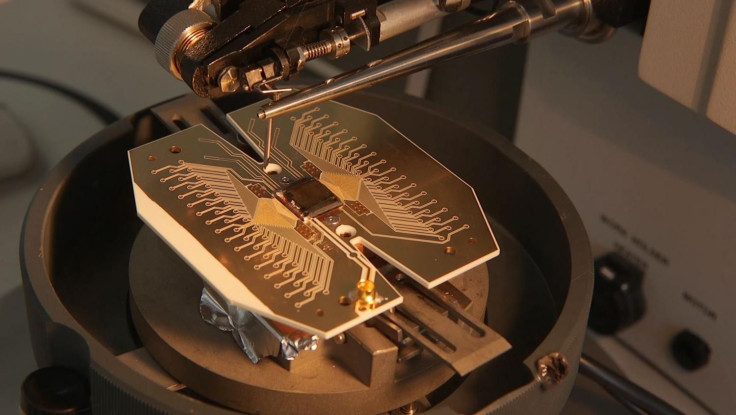Quantum Computing Update: Researchers Unveil ‘Construction Plan’ For An Actual Large-Scale Device

The world of subatomic particles is a weird one — at least insofar as our brains, which have evolved to understand the macroscopic realm around us, can comprehend. In the quantum realm, existence and nonexistence are fluid concepts, particles pop in and out of “empty” space, and occasionally, two particles separated by a distance of billions of light-years can behave as if they are right next to each other.
This last property — known in particle physics jargon as entanglement — coupled with superposition, wherein particles exist in two or more states simultaneously (as exemplified by Schrödinger’s ill-fated cat), is what makes quantum weirdness an area of interest for computer scientists.
The race to build a scalable and viable quantum computer — an idea whose seed was first laid in the 1980s — is driven by the thirst to create an extremely fast and powerful device, one that would make today’s computers look like old, doddering abacuses by comparison.
“For many years, people said that it was completely impossible to construct an actual quantum computer,” Winfried Hensinger from the University of Sussex, who, as part of an international team of scientists, has now unveiled the world’s first practical blueprint for how to build a quantum computer, said in a statement released Wednesday.
“With our work we have not only shown that it can be done but now we are delivering a nuts and bolts construction plan to build an actual large-scale machine,” he added.
Conventional computers rely on bits — units of information that can have a value of either 0 or 1. Unlike conventional bits, quantum computers use qubits, which can exist in superposition, allowing them to have both states at the same time, thereby making it possible to carry out a multitude of calculations simultaneously.
One key problem scientists seeking to create scalable quantum computers have struggled with is preventing decoherence — a phenomenon wherein the fragile superposition of subatomic particles is broken and the whole system moves from the realm of quantum to classical mechanics.
“With our concept we include a method to correct these errors allowing the possibility to build a large scale device,” Hensinger told BBC.
The blueprint, detailed in a study published in the journal Science Advances, shows a trapped ion-based modular device — one that the researchers said can be created using current technology. Each module contains roughly 2,500 ions suspended in magnetic fields that preserve their fragile coherence.
In order to perform the required quantum computations using the trapped ions, the proposed modules would use a microwave–based quantum gate technology, rather than individual laser beams that can control each ion. The technology needed to do this has already been demonstrated, though it still needs to be scaled up drastically to be of any practical use.
“To scale this microwave quantum computer architecture to a large size, we present a fully scalable design that makes use of ion transport between different modules, thereby allowing arbitrarily many modules to be connected to construct a large-scale device,” the researchers said in the study.
The designers estimate that technical challenges notwithstanding, the construction of the device, which may occupy a large building or even an entire football pitch, could cost as much as 100 million pounds ($127 million).
“The availability of a universal quantum computer may have a fundamental impact on society as a whole,” Hensinger said in the statement. “Without doubt it is still challenging to build a large-scale machine, but now is the time to translate academic excellence into actual application building on the UK's strengths in this ground-breaking technology.”
© Copyright IBTimes 2025. All rights reserved.






















